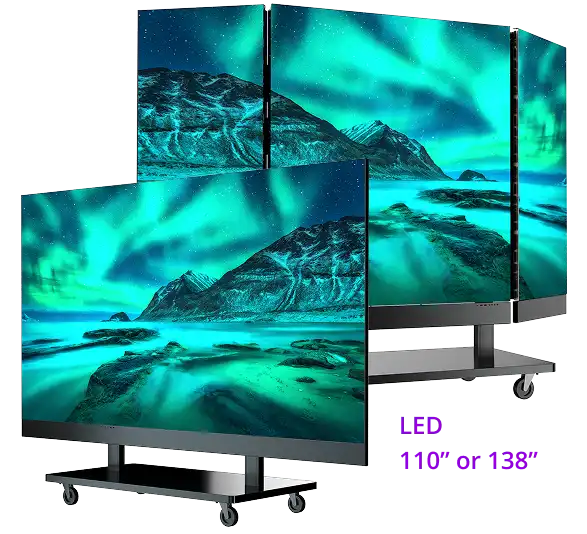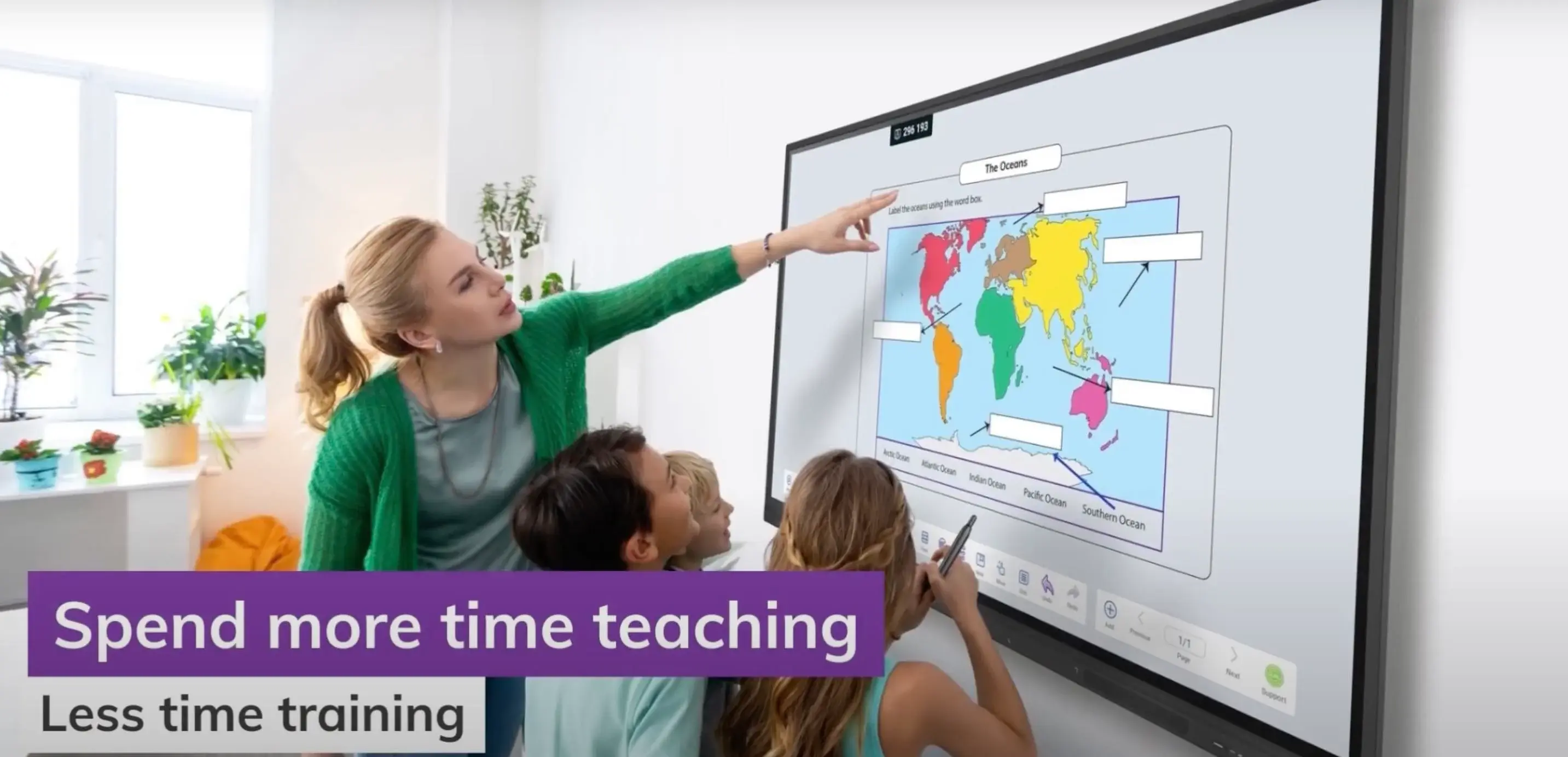
"¿El tamaño importa?” es una pregunta que ha sido objeto de debate en muchos ámbitos de la vida, en el mundo tecnológico esto ha sido la excepción pero hoy en OneScreen intentaremos darle una respuesta definitiva a esa pregunta; O al menos para cuando se trata de pantallas interactivas.
Entendemos que en algunas ocasiones el tamaño de tu pantalla interactiva está condicionado al presupuesto disponible, sin embargo nuestro objetivo es ayudarte a tomar las mejores decisiones tecnológicas, esas decisiones que pueden mejorar tu forma de trabajar.
Sin rodeos te debemos decir que EL TAMAÑO SÍ IMPORTA, según algunos estudios de la Universidad de Utah el tamaño de una pantalla puede optimizar el resultado de las pruebas realizadas hasta en un 52%, reduciendo la cantidad de confusiones o errores que se presentan en las pruebas realizadas.
La razón principal, la fatiga visual; Un tamaño de pantalla más pequeño reduce el campo de visión del contenido o información que es presentado, esto ocasiona un mayor estrés visual generando dificultades para comprender y analizar información limitando la capacidad de comprensión, reduciendo en gran medida la eficiencia del trabajo y aprendizaje.
El tamaño de tu pantalla interactiva no solo influye en la comprensión y análisis de información, también es importante para optimizar el trabajo o las capacidades de exponer una temática, por ejemplo, una pantalla interactiva OneScreen de 86” proporciona un área de trabajo mucho más amplia que la disponible en una pantalla interactiva OneScreen de 55”, una mayor área de trabajo y todas las herramientas que OneScreen pone al alcance de tu mano, sin duda aumenta las posibilidades para explicar tus ideas como nunca antes.
La pregunta qué podemos hacer ahora es: ¿cómo escoger el tamaño de pantalla interactiva que más me conviene?, recuerda que no siempre lo más grande es lo mas optimo para ti, espacios de trabajo diferentes requieren tamaños de pantallas interactivas diferentes, en el equipo de OneScreen hemos preparado 3 factores que debes tener en cuenta para seleccionar el tamaño de pantalla interactiva ideal para ti:
1. Tamaño de la sala (salón de clases).
Idealmente debes considerar donde instalaras tu pantalla interactiva, nuestro equipo de especialistas en OneScreen recomiendan que dejes espacio disponible a los costados de tu pantalla interactiva, para poder hacer uso de los puertos laterales o manipular tu pantalla interactiva sin problemas.
2. Cantidad de personas promedio que ocupan la sala.
Tener en consideración cuántas personas usarán la sala o salón de clases en simultáneo es importante, con audiencias pequeñas no es necesario un tamaño muy grande, puedes ahorrar algo de dinero seleccionando un tamaño sin sobredimensionar las necesidades reales de tu audiencia.
3. Distancia entre el participante más lejano y la pantalla interactiva.
Como hemos aprendido anteriormente uno de los motivos principales por los que el tamaño de tu pantalla interactiva es la fatiga visual de tu audiencia, el equipo de expertos de OneScreen te recomienda un tamaño de pantalla que facilite la visualización del contenido con el que se está trabajando a todos los presentes en la sala o salon de clases.
Recuerda que el tamaño de tu pantalla interactiva puede afectar el aprendizaje o productividad de tu equipo. En OneScreen tenemos un equipo de expertos que puede ayudarte a tomar una mejor decisión y un portafolio de productos que incluye pantallas interactivas de 55, 65, 75, 86 y 98 pulgadas o muros digitales LED de 138, 165 y 220 pulgadas. Si tienes dudas adicionales o un proyecto de innovación interactiva que quieres desarrollar no dudes en contactar a nuestro equipo.
___________
(English version)
How important is the size of an interactive display?
"Does size matter?" is a question that has been the subject of debate in many areas of life, and in the technological world, this is no exception. Today, at OneScreen, we will try to give a definitive answer to that question, or at least when it comes to interactive displays.
We understand that sometimes the size of your interactive display is conditioned by the available budget, but our goal is to help you make the best technological decisions, those decisions that can improve your way of working.
Without beating around the bush, we must tell you that SIZE DOES MATTER. According to some studies from the University of Utah, the size of a screen can optimize the results of tests carried out by up to 52%, reducing the amount of confusion or errors that occur during these tests.
The main reason for this is visual fatigue. A smaller screen size reduces the field of vision of the content or information that is presented, causing greater visual stress and difficulties in understanding and analyzing information, limiting comprehension capacity and greatly reducing work efficiency and learning.
The size of your interactive display not only affects the comprehension and analysis of information but is also important to optimize work or the ability to present a topic. For example, a OneScreen interactive display of 86" provides a much larger workspace than the one available on a OneScreen interactive display of 55". A larger workspace, combined with all the tools that OneScreen provides, undoubtedly increases the possibilities of explaining your ideas like never before.
The question now is, how do I choose the right size of interactive display for me? Remember that the biggest is not always the most optimal for you. Different workspaces require different sizes of interactive displays. At OneScreen, we have prepared three factors that you should consider when selecting the ideal size of interactive display for you:
1. Room size (classroom)
Ideally, you should consider where you will install your interactive display. Our team of specialists at OneScreen recommends leaving space available on the sides of your interactive display to be able to use the side ports or manipulate your interactive display without any problems.2. Average number of people using the room
Taking into consideration how many people will be using the room or classroom simultaneously is important. With small audiences, a very large size is not necessary, and you can save some money by selecting a size that fits the actual needs of your audience.3. Distance between the farthest participant and the interactive display
As we learned earlier, one of the main reasons why the size of your interactive display matters is the visual fatigue of your audience. The OneScreen team of experts recommends a screen size that facilitates the visualization of the content being worked on for all those present in the room or classroom.Remember that the size of your interactive display can affect the learning or productivity of your team. At OneScreen, we have a team of experts who can help you make a better decision and a product portfolio that includes interactive displays of 55, 65, 75, 86, and 98 inches or LED digital walls of 138, 165, and 220 inches. If you have additional questions or an interactive innovation project you want to develop, do not hesitate to contact our team.




 Get a live demo now!
Get a live demo now!


